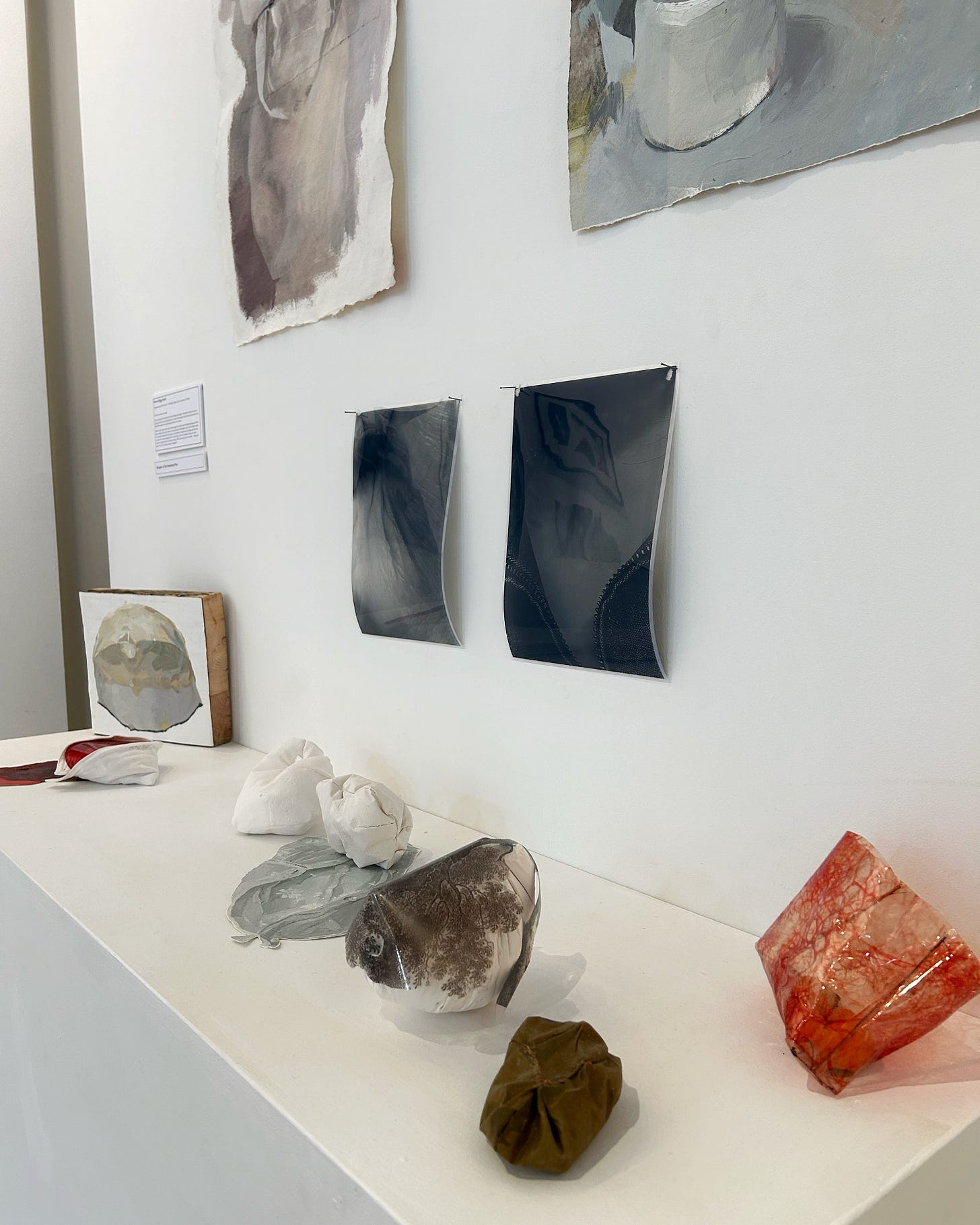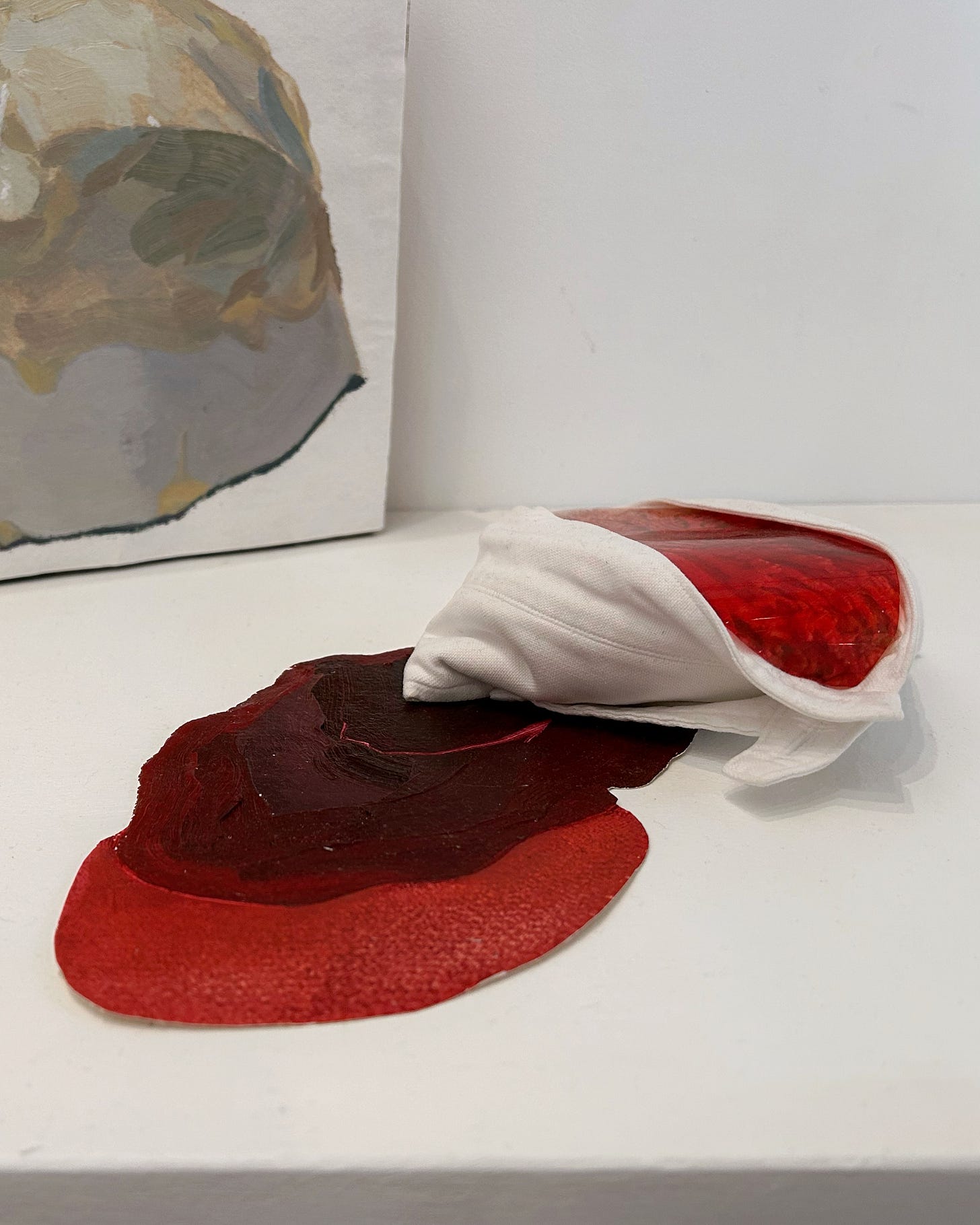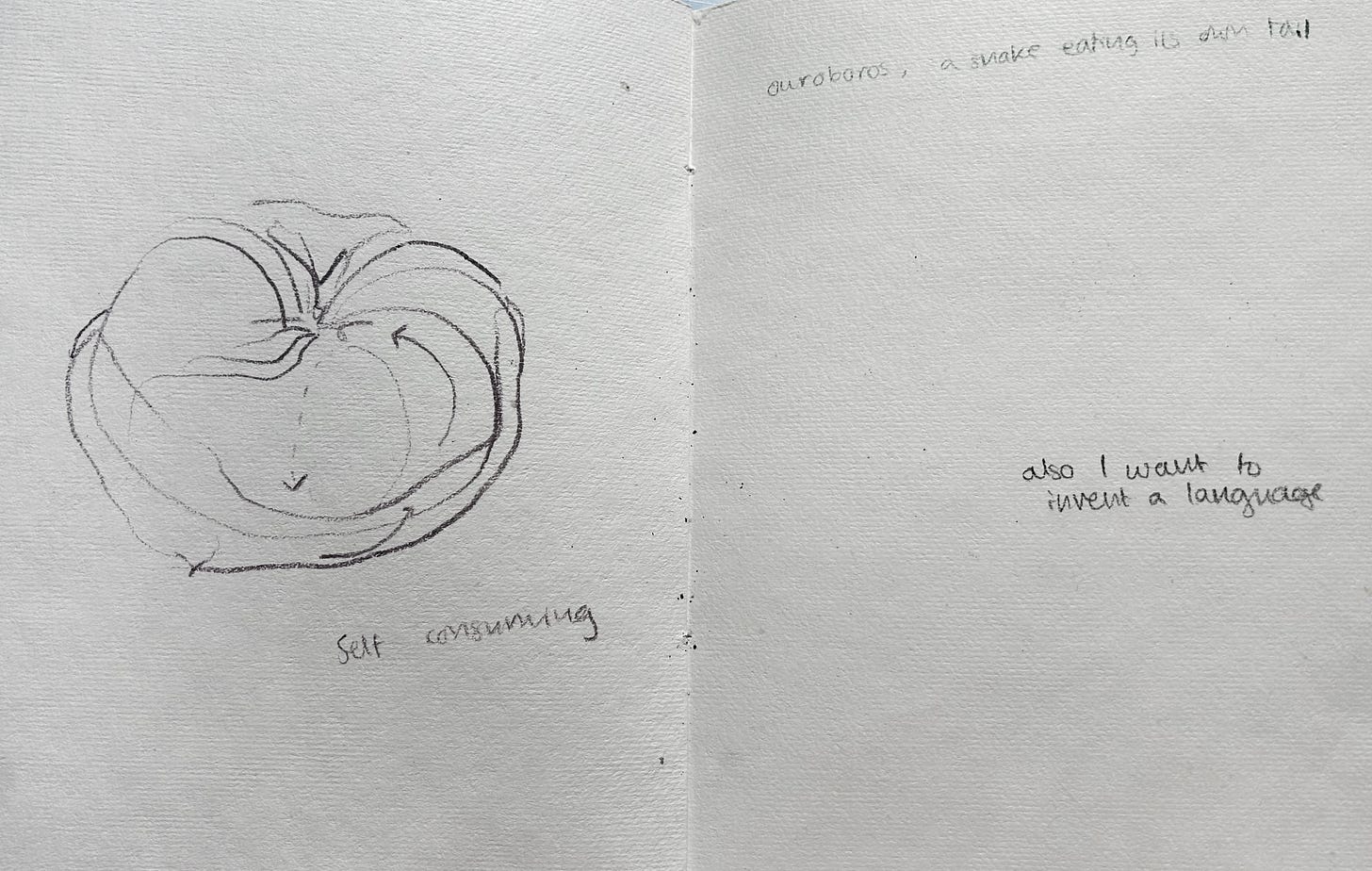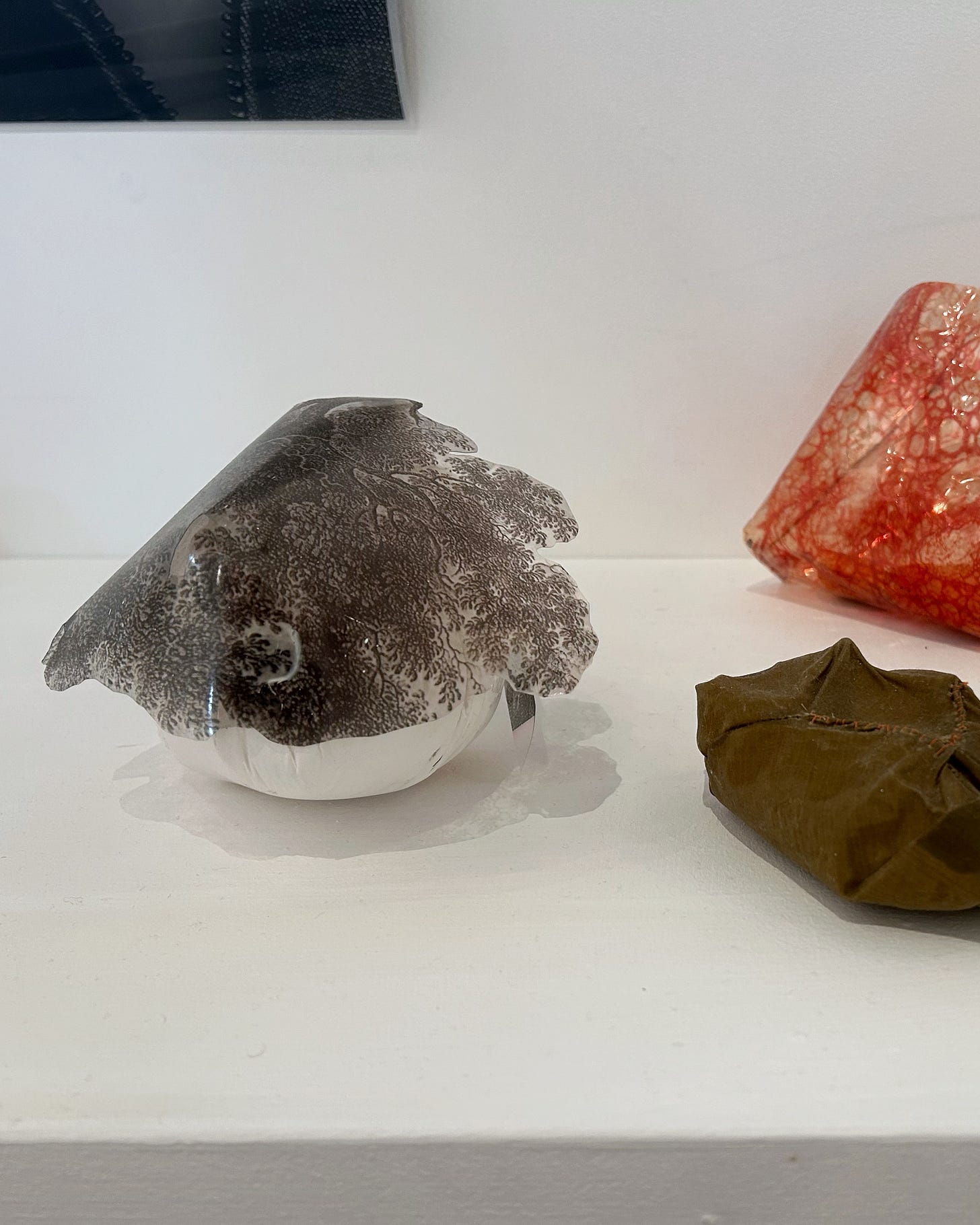As my art foundation course comes to an end, I’d like to reflect on the year.
I now can’t imagine going straight to a degree without having done a foundation course; being given the time and space to make my own work, guided by my own interests and the materials I want to use. To understand the ways of working and developing ideas that work for me. I understand it’s a privilege to have that time, and to be enabled by others.
I’m going to really miss the weekly life drawing classes. I’ve really appreciated the value in dedicating a day to observational drawing, where you can create space from personal ideas and tune more purposely into the hand-eye pathway. In each session I found myself finding moments in the drawing/painting/collage where I particularly enjoyed the way lines connected, or the tonal variation between two shapes, and it reminded me of the formal qualities of making art that I love. I think being given enough time to give attention to these moments helped me understand intuitively where I can find similar moments in more conceptual work.
Over the year, language became an increasing guide for me and my work.
Having the chance to hear snippets of the thoughts inside my art history lecturer’s head made me realise how important it is to listen to other people speak. I enjoyed hearing someone else’s thought process, understanding how they make links and how they perceive something. Sometimes with work that on a surface level does not seem to relate to what I’m interested in, I find clues in the language used to talk about it that resonates, and it makes me realise what is important to me in my own work. I found myself becoming aware of the sort of phrases that I felt inclined to write down, and I think that helped me solidify where my interests lay.
Another thing I’ll be taking away from the course that I wasn’t expecting, is the concept of a Learning Journal – a book of reflections on every day’s work. Some days it did feel tedious to complete, but particularly on ‘Personal Project’ days, I could feel my thoughts clarifying as I broke the day down, and having a space to make notes on tutor feedback was grounding to look back on if I felt myself becoming unstuck one day. I think writing is such a useful way of unpicking something. It can feel hard, and I might lose what I’m trying to get at, but when I find it again and can put it down on paper, it becomes so much easier to explain those ideas to someone else, or to understand what needs to be done next for the work.
It was also so refreshing to use sketchbooks in a more honest way, moving away from A level and GCSE sketchbooks where each page can feel [PB3] somewhat curated for assessment. I think there’s a clue in being given the freedom to choose the format of sketchbook that we each liked, to form a personal relationship to the book, because although we were guided away from the unnecessary page decorations and titles in our A level sketchbooks, I found it difficult to form an instinctive, tactile connection to the spiral bound black A3 book in the same way that I do to my own personal sketchbooks. On the foundation course, we were given numerical guidelines on the number of pages required for assessment, which I think lots of people tussled against to begin with, but once I accepted that as a push to work prolifically and to use the sketchbook often alongside other work, I fell into a space where the book genuinely helped move my ideas forwards, that I haven’t before found with my sketchbooks that are more about observational studies. Leaving some pages with only a couple of words, and others with printed photos of in-progress work to manipulate, all with the space around to breathe, I found the simplification of what a sketchbook page can be - the essence of something - to help me move forwards.
My particular course ended with an exhibition at the Garrison Chapel, and it was exciting to have the opportunity to see everyone’s work all together and in a new context. Whilst putting up the final show did give us the opportunity to think about curation and presentation, the idea of putting up a “show” did make me think carefully about “value”. What did I value, and where have I grown? During my time on the course, I tried to embrace the idea that I was here to experiment, not play safe. I have been exploring ways of working which push me away from making a “nice” painting, instead opening up my thinking to explore how the exploratory objects and images I make communicate together. I have been exploring objects as language – what do the objects I make communicate, when presented together as collections of phrases. I’m really pleased I felt enabled to work this way, but in the end it sometimes felt slightly at odds with the pressure exerted upon us to create a definitive conclusion for the exhibition. Whilst the final exhibition presents final outcomes, tidied and neat, I think for myself and for many, the experience of foundation course might have found better representation in a space which enabled us to share our journey (consisting perhaps of small, question-asking studies, or in a risk taken), alongside any outcomes. I understand this is a personal response to being asked to bring my experimentation to a conclusion and “present” – and that this is something we will be asked to do as artists, but I would defend the notion that the real heart of the foundation course at our stage of learning, is to celebrate the fact that we all become vulnerable enough to explore – and that that exploration might not yet be ready to conclude for the sake of others.
Thank you to all the tutors for their encouragement and ideas, to the technicians for their endless facilitation and willingness to help, and to all the other students. I’ve enjoyed working in a space where everyone feels able to offer support and thoughts about each other’s work, not only in organised crits, but also just as we walk through others’ studio spaces.









